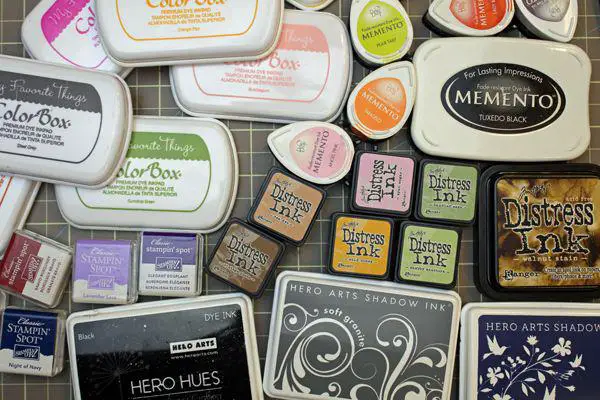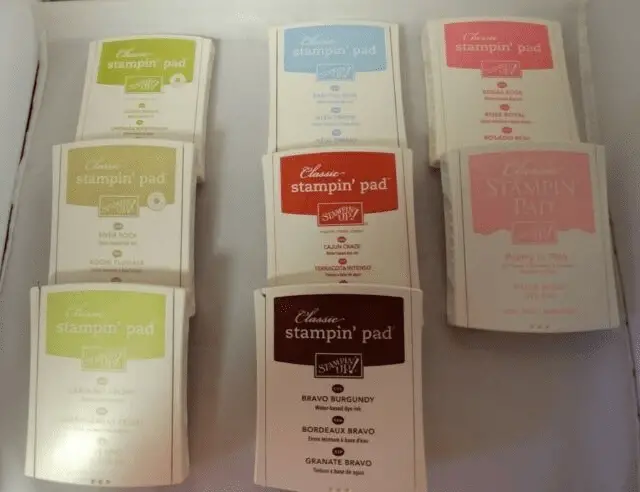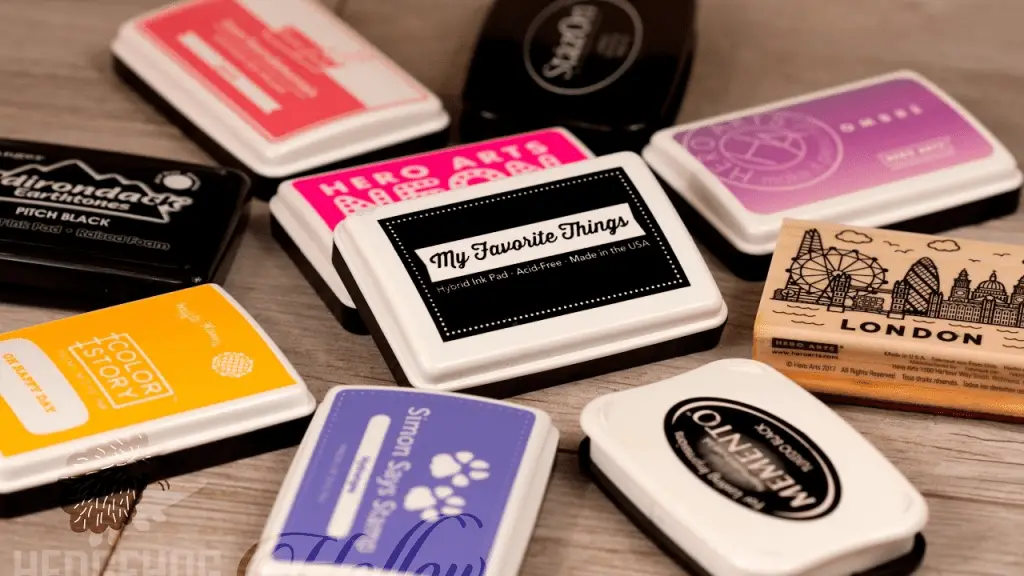
Papercraft stamping has become more popular in the last few years, and there are many supplies available to keep you as a stamper busy and enjoying. Besides the rubber stamps, stamping ink is one of the essential supplies needed, and there are every color possible. It might be confusing which one to use and what ink does what, as well as which stamping ink suits you. So, continue reading to learn more!
What Stamping Ink Do You Need?
When you are thinking about the stamping ink you need for your project, consider the paper type you will use. What paper you use depends on the kind of project you will work on, so all the decisions start there. It’s best to have good practice with your stamp and ink on the sample of paper you’re going to use, to ensure that you’re content with it, and the ink is the best choice for the work.
If you’re confused, you can read the guidelines on the ink pad, as it should instruct you which levels you can use it on.
So, below are the most common inks available on the market and how they are used.
Water-Based Dye Inks

This was the former standard ink by stampers, with bright color and water base means that the ink would “bleed” if you color over them with water-based mediums. They are acid-free but not light-resistant, so they fade after some time (not for the scrapbookers).
Water-Based Dye Inks are ideal for stamping styles, and they can be used to watercolor by squeezing the pad on a compact surface and getting the ink with a wet brush. These are perfect for stamping on the card stock but not on the other levels.
With their transparent colors, they work perfectly on white and light color boards, and most colors will not appear on dark shades of boards. They are quick to dry so they cannot be used for embossing.
Dye Inks

These are among the most widely used stamping inks out there, and they are available in every color you want. Also, there are full size and smaller pads that allow you to test more colors for less. Dye inks are offered in different pad surfaces with linen the most popular, but sponge-type ink pads and hard felt are also available on the market. In this dye ink category, there are many different “kinds” of dye inks with unique properties.
Storage and Cleaning
The best way to store dye ink pads is upside down, so the ink is close to the surface of the pad, which is stamp-ready. If they are somewhat dry, refresh them with a re-inker. Since dye inks are water-based, they can be cleaned out with a dampened cloth.
Distress Inks
This is water-based dye ink, but it deserves a group of its own due to its unique properties. Although they are water-based Distress Inks dry a little slower than many other water-based dye inks, hence they are perfect for embossing. They respond with water, allowing all types of techniques. They also mix and blend well together with water to create new effects.
Waterproof Dye Inks
This ink has a different base; thus, when they are dry, you can dye and watercolor at them, and they will not bleed or stain. Waterproof Dye Inks are perfect for line images that you like to color, which are more permanent than its standard dye ink equivalent. These are more challenging to clean out of your stamps and need a special cleaner to eliminate the ink.
Solvent Inks
Solvent-based inks are used on most surfaces (except fabrics which are regularly washed, and they don’t hold up with constant cleaning), such as plastic, metal, glass, and more. They are permanent inks and don’t need heat for its longevity. Most inks are authentic and acid-free. They are colorless, but there’s a brand of StazOn Opaque inks that are available in different opaque pastel colors such as white.
Storage and Cleaning
Provided that you assure you put the lid back immediately, the pad will be suitable for use for a long time. The solvent attributes of the ink do mean it will dry out your pad if you put the lid off during stamping, so it’s ideal to find time to pop the transparent plastic insert over the ink pad after every stamp. You can purchase re-inkers to restore your ink pad as needed. Tsukineko created an extraordinary cleaner to use with Stazon inks.
Pigment Inks
This type of ink is a lot denser than the dye inks, and they contain glycerin base. While Dye Inks are more “liquidy” and transparent, pigment inks are thick and opaque. They always come with a squashy foam pad to allow the ink to be absorbed immediately by the stamp. Since it’s a little bit fatter ink, the pad quickly dries out than the dye inks and must be refilled more frequently.
Pigment inks are excellent for stamping on paperboard, and an exciting thing about them is you can stamp light colors on darkened cardboard, and ink color will appear. This ink sits on top of the paperboard and takes time to dry. Therefore, it’s perfect for embossing. Also, they are resistant to fading, which makes them ideal for scrapbooking. They need heat to dry up entirely and are not for nonporous levels.
Storage and Cleaning
There are mixed views on the best way to store pigment inks, but saving them inverted is not necessary. Some stampers found out that when they stored the ink upside down, it leaked out of the cases, so they kept them the right way up instead. If the pad dried out, restore with re-inkers or spray them with a mini-mister to renew the ink. These inks are submerged in a water-based medium, so it is much easier to clean the hands and the crafts.
Hybrid Inks
These are a mixture between dye and pigment inks and comprise compounds of both. They work on all levels (some levels may need heat setting to dry up the ink completely), they clean off quicker than the solvent inks and are permanent when set by the heat.
Hybrid inks dry as fast as dye inks, and so they aren’t for embossing. They are more apparent than pigment inks, but a tad darker than the dye ink.
Chalk Inks
Chalk inks are like pigment inks but with more “chalky” output. They were very popular way back in the stamping industry, but in recent years, they have become more difficult to find. They dry quicker than the pigment inks, and they are authentic and acid-free, which makes them ideal for scrapbooking. Also, they are permanent with heat setting, so they are for water coloring. Even without the heat, they are resistant to fading and smudging. Since they have a dusty matte finish, they look beautiful on a dark paperboard.
Embossing Ink Pads
This type of ink is either transparent colorless or a little tinted slow dried inks for watermarking and embossing. The translucent inks are perfect for stamping on boards to create a modest watermark effect. They are also great for heat embossing, but the image is transparent, so if you want to see where you stamped your photo, choose a tinted one.
Specialty Inks
There are numerous kinds of stamping inks available online and out there. Watermark and Resist inks are perfect for creating watermark effects on paperboards, as well as “sticky” ink and slow drying. They work well with pigment powders and embossing powders. Emboss inks are created to do well with embossing powders, and they are pigment ink with no pigment. Some are slightly colored, so you see where you stamped. The Glue Pad is not a completely stamping ink but more of a stamp-able colorless adhesive you use with flocking, pigment powders, glitter, and more.
The Takeaway
We hope you found this stamping ink article informative and entertaining. Although we have not covered all the inks here, there are different types of stamping inks used on fabrics and other things, but those mentioned above are the main ones you will undoubtedly come across in paper art and crafts.
